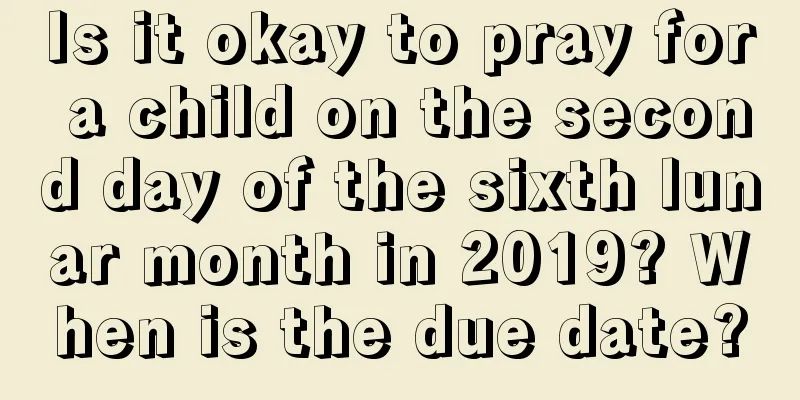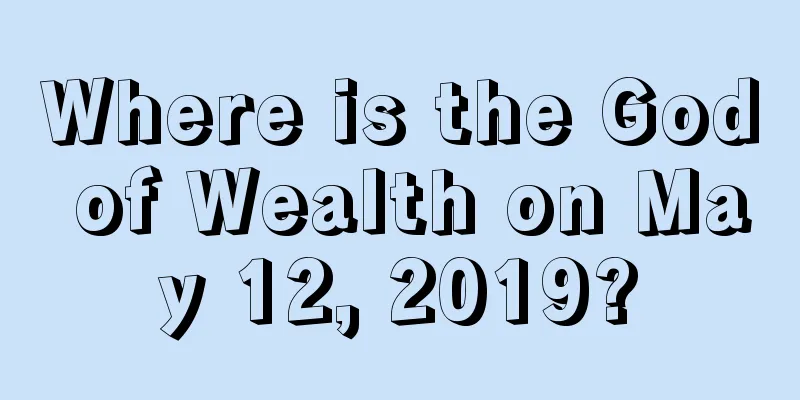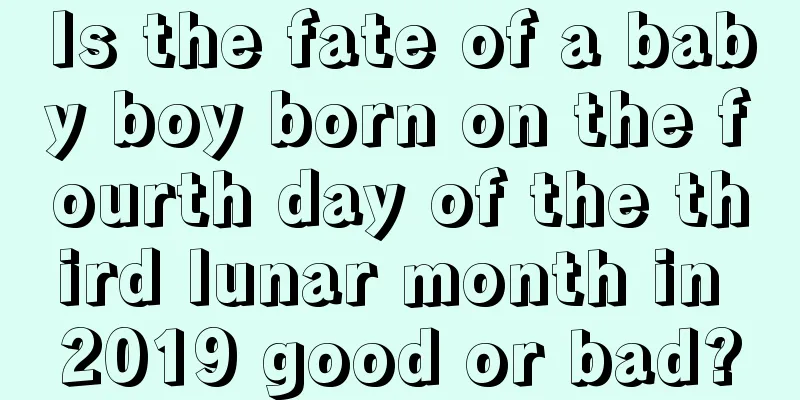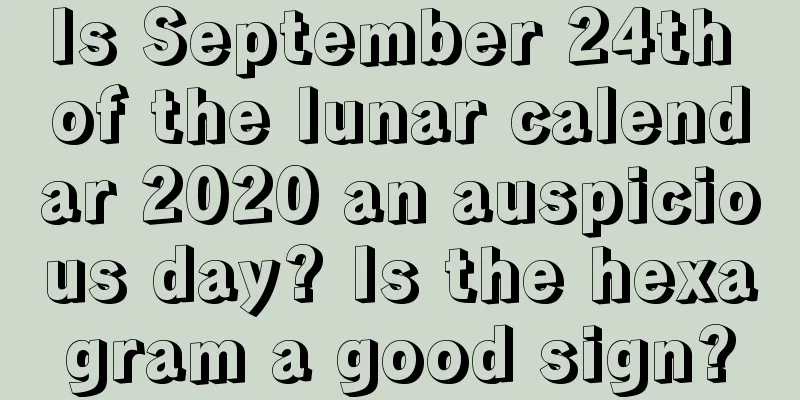Welcome the Chinese New Year. What are the customs of the Chinese New Year?
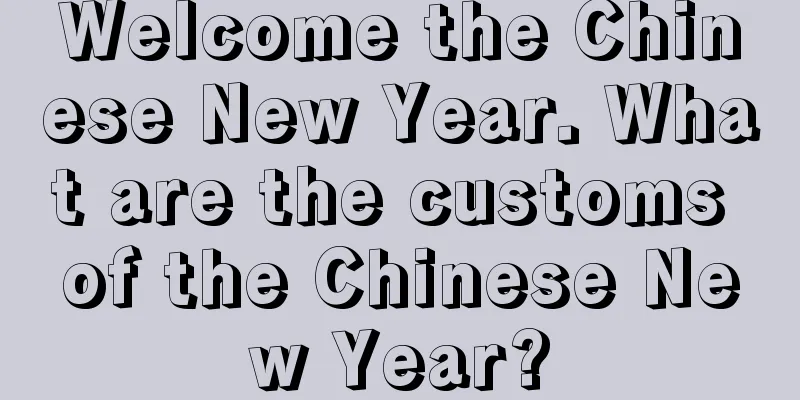
Introduction: The most Chinese festival in China is the Spring Festival. The Spring Festival is the most important of our traditional festivals. People from all parts of our country celebrate the arrival of the Spring Festival in different ways. What are the customs of the Spring Festival? Please follow the editor to learn more about it below! In addition to the grand and festive celebrations of the Spring Festival, we also need to pay attention to some taboos regarding the Spring Festival. Next, let’s take a closer look at the Spring Festival special topic compiled by Mr. Shui Mo!What is the Spring Festival?The Spring Festival is commonly known as "New Year's Day". Its original name is "New Year's Day". Du Taiqing of the Sui Dynasty said in "Wuzhu Baodian": "The first month is the Duanyue, and the first day is New Year's Day, which is also called Zhengchao or Yuanshuo." The original meaning of "yuan" is "head", and later it was extended to "beginning". Because this day is the first day of the year, the first day of spring, and the first day of the first month, it is called "Sanyuan"; because this day is also the first day of the year, the first day of the month, and the first day of the day, it is also called "Sanchao"; and because it is the first new moon day, it is also called "Yuanshuo". The first day of the first lunar month is also known as Shangri, Zhengchao, Sanshuo and Sanshi, which means that the first day of the first lunar month is the beginning of the year, month and day.What are the traditional customs of the Spring Festival?Opening firecrackers On the morning of the Spring Festival, firecrackers are set off first to wish for good luck when the door is opened. This is called "opening firecrackers". After the sound of firecrackers, the ground is covered with red fragments, as bright as brocade, which is called "Mantanghong". At this time, the streets were full of auspiciousness and joy.New Year's greetings An important activity during the Spring Festival is to visit new friends and neighbors to wish them a happy new year, which was formerly known as New Year's greetings. The custom of New Year greetings among the Han people has already existed in the Han Dynasty. It became very popular after the Tang and Song dynasties. Some people did not need to go in person, but could send their congratulations using a business card. It was called "ci" in the Eastern Han Dynasty, so business cards are also called "mingci". After the Ming Dynasty, many families posted a red paper bag at the door to collect business cards, which was called "menbu". The forms of mutual visits and New Year greetings among the people can be roughly divided into four categories according to their social relations: one is visiting relatives. You must visit your father-in-law on the first day of the new year and bring gifts. After entering the door, you should kowtow three times to the Buddha statue, the images of ancestors, and the tablets, and then kneel down to pay homage to the elders in turn. You can stay to eat and play. The second is a courtesy visit. If you are wishing a happy new year to a colleague or friend, you only need to kowtow three times to the Buddha statue as soon as you enter the house. If you are of the same age as the host, you only need to bow your hands. If the host is older than you, you should still kneel down actively. The host should get up from his seat and pretend to support you, and say "no need to be polite" repeatedly to show his humility. In this situation, it is generally not advisable to sit for a long time. You should just exchange a few polite words and then leave. After accepting the worship, the host should choose a day to return the worship. The third is a thank-you visit. One should buy some gifts and send them to anyone who owes a favor to them (such as lawyers, doctors, etc.) during the year, using the opportunity of New Year's greetings to express gratitude. The fourth is a door-to-door visit. We don't have much contact with our neighbors on weekdays, but we can still get along well when we meet. During the New Year, we just go to the yard, clasp our fists together and say "Congratulations on your prosperity" and "Everything goes well for you" to each other, and then sit in the house for a while. There is no other etiquette. In ancient times, there was a distinction between New Year's greetings and New Year's congratulations: New Year's greetings were to wish the elders a happy new year; New Year's congratulations were for peers to congratulate each other. Nowadays, some government agencies, recreational groups, enterprises, and schools gather together to congratulate each other, which is called "group greetings." New Year's greetings are a traditional custom among the Chinese people. It is a way for people to bid farewell to the old and welcome the new and express good wishes to each other. In ancient times, the original meaning of the word "New Year's greetings" was to congratulate the elders on the New Year, including kowtowing to the elders, wishing them a happy New Year, and asking about their well-being. When meeting friends and relatives of the same generation, one should also bow and congratulate them. In the old days, people would predict the harvest of the new year based on the weather during the first few days of the new year. The theory originated from Dongfang Shuo's "Sui Zhan" in the Han Dynasty, which said that eight days after the year, the first day is the chicken day, the second day is the dog day, the third day is the pig day, the fourth day is the sheep day, the fifth day is the cow day, the sixth day is the horse day, the seventh day is the great man day, and the eighth day is the grain day. If the day is sunny, the things it governs will flourish; if the day is cloudy, the things it governs will not prosper. Later generations followed this custom and believed that it was auspicious if the weather was clear, windless and snowless from the first to the tenth day of the lunar month. Later generations developed the fortune-telling into a series of sacrificial and celebratory activities. There is a custom of not killing chickens on the first day of the lunar month, not killing dogs on the second day, not killing pigs on the third day... and not executing people on the seventh day. Paste-painted chicken Zhuxian Town woodblock New Year pictures In ancient times, people painted chickens on doors and windows during the Spring Festival to drive away evil spirits. The "Xuan Zhong Ji" written by a person from the Jin Dynasty talked about the celestial rooster on the Dushuo Mountain mentioned above. It said that when the sun just rose and the first ray of sunlight shone on the big tree, the celestial rooster crowed. As soon as it crows, all the chickens in the world start to crow. Therefore, the chicken cut during the Spring Festival actually symbolizes the celestial chicken. However, there is also a saying in ancient mythology that the chicken is a transformed version of the Chongming bird. It is said that during the reign of Emperor Yao, friendly nations offered tribute of a kind called the Chongming bird, which could ward off evil spirits. Everyone welcomed the arrival of the Chongming bird, but the tribute envoys did not come every year. So people carved a wooden Chongming bird, or cast a bronze Chongming bird and placed it at the door, or painted a Chongming bird on doors and windows to scare away evil spirits and ghosts so that they would not dare to come again. Because the Chongming bird looks like a chicken, people later gradually changed to painting chickens or cutting window decorations and pasting them on doors and windows, which became the source of paper-cutting art in later generations. In ancient my country, people attached great importance to chickens and called them "the bird with five virtues." "Han Shi Wai Chuan" says that it has a crown on its head, which represents literary virtue; it has spurs on its feet that enable it to fight, which represents martial virtue; it dares to fight when the enemy is in front of it, which represents courage; it shares food with its own kind, which represents benevolence; it keeps watch on time and announces the dawn, which represents faith. Therefore, people not only cut the chicken during the Chinese New Year, but also designate the first day of the New Year as Chicken Day. Gathering Wealth: It is said that the first day of the first lunar month is the birthday of the broom. You cannot use the broom on this day, otherwise it will sweep away your luck and money, and attract "broom stars" and bring bad luck. If you must sweep the floor, you must sweep from the outside to the inside. You cannot throw water or garbage outside on this day, for fear of losing money. Today, many places still keep the custom of cleaning the house on New Year's Eve, not sweeping the house or taking out the garbage on New Year's Day, and preparing a large bucket to hold waste water, which is not poured out on that day. Summary: The above article content is the analysis of the customs of the Spring Festival introduced by the editor to readers. You can learn about it. Of course, the customs of celebrating the Spring Festival vary from region to region. If you want to know more, please visit Mr. Shui Mo for inquiries! |
<<: What is the Beginning of Spring and how did it develop?
>>: What should Sagittarius pay attention to when greeting the New Year in 2017?
Recommend
Check the position of the God of Wealth on February 22, 2020, Lunar Calendar, Year of the Rat!
The position of the God of Wealth is not fixed. C...
Is the first day of the third lunar month in 2022 suitable for caesarean section? What should I pay attention to after cesarean section?
The third month of the lunar calendar arrives in t...
Where is the God of Wealth on June 24, 2017?
The arrival of the leap month of June in the luna...
What are the lunar calendar do’s and don’ts on Christmas Day 2020? Introduction to sentences suitable for friends on Christmas
The do’s and don’ts of the lunar calendar are diff...
Will a girl born on the second day of the eleventh lunar month in 2021 have a good life?
Everyone has different horoscopes, different birth...
Is it good for a dog baby to be born on October 15th, the Lower Yuan Festival? What is his fate?
The advantage of people born in the Year of the Do...
What should we pay attention to in health preservation after Jingzhe?
After the Waking of Insects, all things come back ...
What are some nice nicknames for girls born in the Year of the Ox in 2021?
Nicknames don’t require as many factors to be cons...
Can I get a haircut on the beginning of spring in 2018? What are the rules?
The Beginning of Spring is the first of the 24 sol...
Is February 24th of the lunar calendar in 2020 an auspicious day for ancestor worship?
The almanac contains a large number of rules and c...
Is it auspicious to get engaged and get a marriage certificate on the second day of the third lunar month in 2020? Is it a good idea to get married?
Getting married is not only about choosing a good...
What is the difference between Chinese New Year and Spring Festival?
Some people may really not be able to distinguish ...
Is it a good time to start renovation on the 17th day of the ninth lunar month (11.2) in 2020?
"Breaking ground" means digging and digg...
What is the content of the lunar calendar for the eighth day of the twelfth lunar month in 2020? What are the do's and don'ts?
The twelfth month of the lunar calendar, commonly...
Which days in October of the lunar calendar in 2020 are auspicious days for starting renovations?
Which days in October of the lunar calendar in 202...

